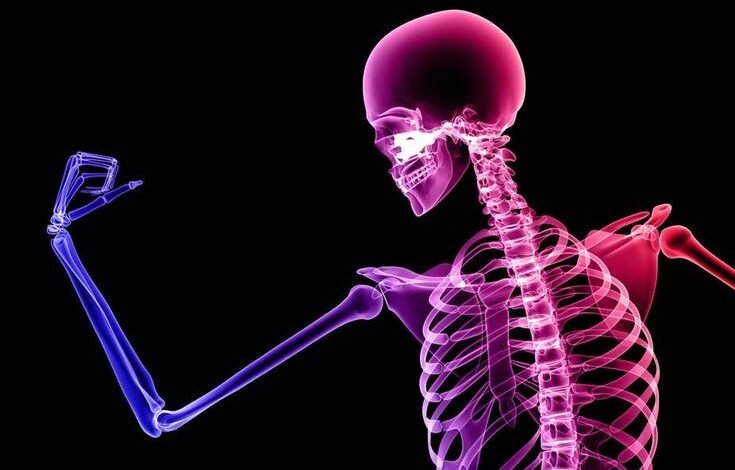
Bone health is of utmost importance for individuals of all ages, as it plays a vital role in maintaining overall well-being and quality of life. Our bones provide structure, protect organs, and support mobility. However, various factors, such as age, genetics, lifestyle choices, and nutritional deficiencies, can impact bone health and lead to conditions like osteoporosis and fractures. In this article, we will delve into the world of bone health, exploring risk factors, the importance of nutrition and exercise, lifestyle habits, diagnosis and treatment options, as well as preventive measures. By understanding the fundamentals of bone health, we can embark on a journey towards stronger, fortified bones that support us throughout our lives.
Generic Fosamax is a prescription drug with a brand name. It is FDA-approve for the following adult uses:Prevent or cure osteoporosis (a disorder that produces brittle, weak bones) in menopausal females.Treat osteoporosis that’s caused by using a type of medication called glucocorticoids.Treat Paget’s bone disease.
1.Understanding Bone Health: A Brief Overview
1.1 The Structure and Function of Bones
Bones may seem like mere lifeless structures, but they play a crucial role in our overall health and well-being. Think of them as the strong support system that keeps us upright and mobile. Bones are living tissues that constantly rebuild and repair themselves throughout our lives. They provide a framework for our body, protect vital organs, and store minerals like calcium and phosphorus.
1.2 Common Bone Health Terms and Measurements
When it comes to bone health, there are a few key terms and measurements you should be familiar with. Bone density refers to the amount of minerals in your bones, which determines their strength and resilience. A bone mineral density (BMD) scan, often done using a dual-energy X-ray absorptiometry (DXA) machine, measures the density of bones and helps identify osteoporosis or osteopenia – conditions characterized by low bone density. Another important term is bone remodeling, the lifelong process of old bone being broken down and replaced by new bone tissue.
1.3 The Impact of Age on Bone Health
As we age, our bones naturally become less dense and more prone to fractures. This is especially true for women after menopause, when the decline in estrogen levels accelerates bone loss. While age is a significant factor in bone health, it’s important to note that building strong bones and maintaining their health is a lifelong endeavor.

2.Risk Factors and Causes of Poor Bone Health
2.1 Genetic Factors and Family History
Genetics influence our bone health to a certain extent. If your parents or grandparents have had osteoporosis or fractures, you may have a higher risk of developing these conditions too. However, genetic predisposition doesn’t mean your fate is sealed – lifestyle choices still play a significant role.
2.2 Hormonal Imbalances and Bone Health
Hormones, such as estrogen and testosterone, play a crucial role in maintaining bone health. When hormonal imbalances occur, such as during menopause or certain medical conditions, bone loss can accelerate. It’s essential to be aware of these hormonal changes and discuss them with your healthcare provider.
2.3 Lifestyle Factors Contributing to Weakened Bones
Several lifestyle factors can contribute to poor bone health. Lack of exercise, especially weight-bearing activities that put stress on the bones, can lead to weakened bones over time. Smoking, excessive alcohol consumption, and a diet lacking in essential nutrients also negatively impact bone health. Paying attention to these factors and making necessary changes can help fortify your bones.
3.The Importance of Nutrition for Strong Bones
3.1 Essential Micronutrients for Bone Health
Nutrition plays a vital role in maintaining strong bones. Adequate intake of key micronutrients like calcium, vitamin D, magnesium, and vitamin K is crucial. These nutrients work in synergy to support bone formation, calcium absorption, and mineralization.
3.2 Calcium and Vitamin D: Key Players in Bone Strength
Calcium and vitamin D are particularly important for bone health. Calcium provides the building blocks for bone structure, while vitamin D helps the body absorb and use calcium effectively. It’s essential to consume calcium-rich foods like dairy products, leafy greens, and fortified foods, and get enough sunlight exposure for vitamin D synthesis.
3.3 Dietary Sources and Recommended Intake of Bone-Boosting Nutrients
To ensure optimal bone health, incorporating a variety of nutrient-rich foods is key. Apart from calcium and vitamin D, other nutrients like magnesium (found in nuts and seeds), vitamin K (abundant in dark leafy greens), and phosphorus (found in fish and legumes) also support bone health. Consulting with a registered dietitian can help you determine the recommended intake and sources of these nutrients.
4.Exercise: Building Strength and Protecting Bones
4.1 Weight-Bearing Exercises for Bone Health
Exercise is not only crucial for overall fitness but also plays a significant role in maintaining bone health. Weight-bearing exercises, such as walking, dancing, and hiking, help stimulate bone formation and maintain bone density. They put stress on the bones, signaling the need for increased strength and density.
4.2 Resistance Training and its Impact on Bone Density
In addition to weight-bearing exercises, incorporating resistance training into your routine is beneficial for bone health. Exercises using weights or resistance bands help strengthen specific muscle groups, which, in turn, can enhance bone density. The controlled stress placed on the bones during resistance training stimulates bone remodeling and improves overall bone strength.
4.3 Balance and Posture Exercises for Fall Prevention
Maintaining good balance and posture is vital for fall prevention, especially as we age. Exercises that focus on balance, such as tai chi or yoga, help improve stability and coordination, reducing the risk of falls and fractures. Additionally, practicing good posture in everyday activities can also contribute to better bone health.
Remember, building and maintaining strong bones is a lifelong commitment. By understanding the basics of bone health, addressing risk factors, focusing on nutrition, and incorporating exercise into your routine, you can embark on a journey to fortified bones and a healthier, more vibrant life. Cheers to strong bones and a good sense of humor – after all, life’s too short to take osteoporosis too seriously!Making Bone Health a Priority: Small Changes for Big Impact
5.Lifestyle Habits for Optimal Bone Health
5.1 Smoking and Bone Health: Understanding the Connection
We all know smoking is bad for us, but did you know it can also wreak havoc on our bones? Yep, that’s right! Smoking can actually weaken your bones and increase the risk of fractures. So, if you needed another reason to quit, think about your bone health. Kick that smoking habit to the curb and give your bones the love they deserve!
5.2 The Role of Alcohol and Caffeine in Bone Health
Raise your glass, but not too high! While a little wine or a cup of coffee can be enjoyable, excess alcohol and caffeine can actually hinder your bone health. These substances can interfere with calcium absorption, which is essential for strong and healthy bones. So, go easy on the booze and limit your caffeine intake for the sake of your bones.
5.3 Stress Management and its Influence on Bone Strength
We all experience stress at one point or another, but did you know it can impact your bones? Chronic stress can lead to increased cortisol levels in the body, which can weaken your bones over time. So, find healthy ways to manage stress, whether it’s through exercise, meditation, or indulging in a little self-care. Your bones will thank you!
6.Diagnosis and Treatment Options for Bone Health Concerns
6.1 Common Bone Health Tests and Screenings
When it comes to your bones, knowledge is power. Regular bone health tests and screenings can help detect any issues early on and prevent potential problems in the future. Talk to your doctor about getting a bone density test or other recommended screenings to stay on top of your bone health.
6.2 Medical Conditions Affecting Bone Health
Sometimes, our bones need a little extra attention due to underlying medical conditions. Conditions like osteoporosis or hormonal imbalances can impact bone health and increase the risk of fractures. If you have any concerns or suspect you may have a medical condition affecting your bones, don’t hesitate to reach out to your healthcare provider for guidance and treatment options.
6.3 Medications and Therapies for Bone Health
In some cases, medication or therapy may be necessary to promote bone health. Your doctor may prescribe specific medications or recommend certain therapies to help strengthen your bones and reduce the risk of fractures. Remember, there’s no shame in seeking medical help when it comes to your bone health – it’s all about giving your bones the care they need.
7.Prevention: Taking proactive Steps for Long-Term Bone Health
7.1 Age-Appropriate Bone Health Strategies
As we age, our bone health becomes even more crucial. It’s never too early or too late to start taking proactive steps to maintain strong bones. From ensuring an adequate intake of calcium and vitamin D to staying physically active, there are plenty of age-appropriate strategies to give your bones the love and attention they deserve.
7.2 Fall Prevention and Home Safety Measures
Prevention is always better than cure. Taking steps to prevent falls and creating a safe home environment can significantly reduce the risk of fractures, especially for those with weaker bones. Simple measures like removing tripping hazards, installing grab bars in bathrooms, and improving lighting can go a long way in safeguarding your bones.
7.3 Monitoring Bone Health and Regular Check-ups
Just like you’d schedule regular check-ups for other aspects of your health, it’s important to keep tabs on your bone health too. Regular check-ups and monitoring can help you identify any changes or issues early on, allowing for timely intervention. So, make those appointments and keep track of your bone health – your future self will thank you!
8.Making Bone Health a Priority: Small Changes for Big Impact
8.1 Incorporating Bone-Boosting Foods into Your Diet
You’ve heard it before, but it’s worth saying again – you are what you eat! Give your bones a boost by incorporating bone-healthy foods into your diet. Think calcium-rich dairy products, leafy greens, and fish packed with omega-3 fatty acids. Your taste buds and your bones will both be happy!
8.2 The Benefits of Regular Exercise for Strong Bones
Physical activity isn’t just for toning those muscles and boosting your heart health – it’s also essential for strong bones! Engaging in weight-bearing exercises like walking, jogging, or dancing can help improve bone density and reduce the risk of fractures. So, put on those sneakers and get moving for the sake of your bones!
8.3 Finding Joy and Humor in the Journey to Better Bone Health
Taking care of your bone health doesn’t have to be a chore – it can be a journey filled with joy and humor. Embrace the process, find activities that make you smile, and surround yourself with positive vibes. After all, laughter is not just good for the soul, but for your bones too! So, go ahead and find the fun in taking care of your precious bones.In conclusion, prioritizing bone health is crucial for maintaining a strong and resilient body. By incorporating a balanced diet rich in bone-boosting nutrients, engaging in regular exercise that promotes bone strength, and adopting healthy lifestyle habits, we can fortify our bones and reduce the risk of fractures and other bone-related conditions. Additionally, staying informed, getting regular check-ups, and taking proactive steps for prevention can contribute to long-term bone health. Remember, the journey to better bone health is an ongoing process, but with dedication and care, we can ensure that our bones remain strong, supporting us for years to come.


